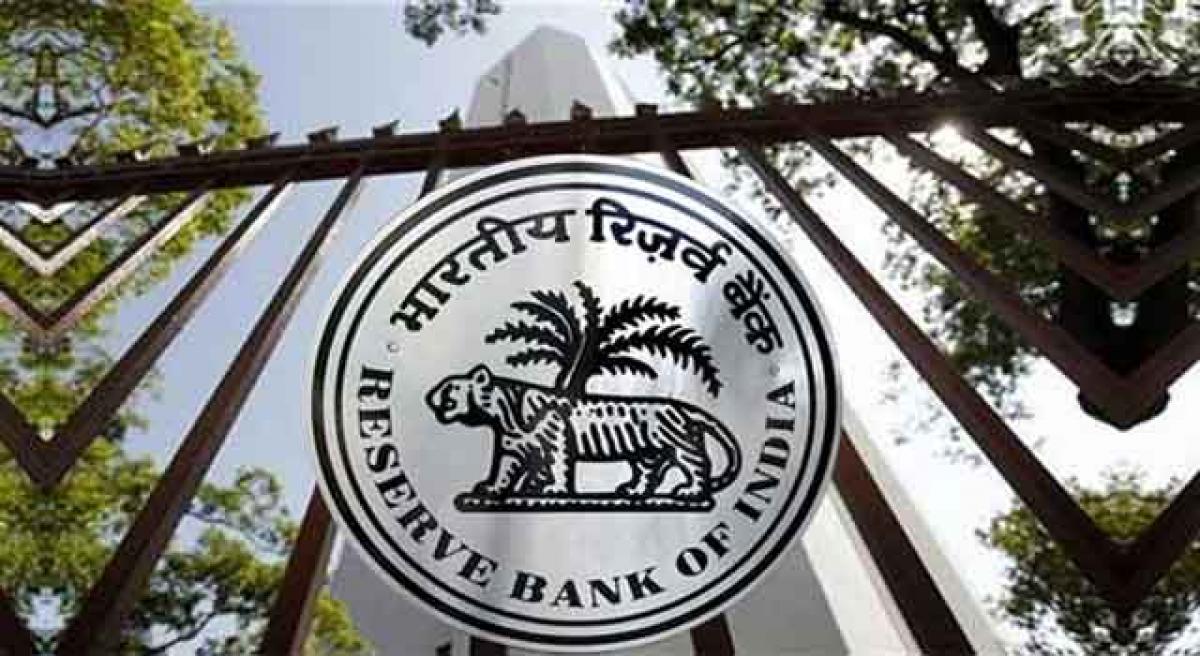Live
- NLC India Limited’s First Supercritical Power Plant Begins Commercial Operation
- YouTube Expands AI Auto-Dubbing to More Creators
- Australia: Two teens arrested over shooting, car fire in Sydney
- Dedicated Mirasi of Vedanta Desikar temple passes away
- Attacks on Hindus in B'desh: Why are Nobel laureates from Bengal not saying a word, asks Anirban Ganguly
- Civic chief inspects MSME survey
- MLA inaugurates development projects in Chittoor
- SBI offers collateral-free loans to empower farmer groups
- Dist police annual sports meet begins
- UN experts urge US to end 'double standards' on Israel-Palestine conflict
Just In

As expected, RBI has kept repo rate, at which it lends to banks, unchanged at 6.5 per cent and reverse repo rate, at which banks park excess money with it, at 6 per cent. It also retained Cash Reserve Ratio i.e., total deposits to be kept as cash with the RBI, and Statutory Liquidity Ratio, total deposits that banks need to invest in government approved securities, at 4 per cent and 21.5 per cent
As expected, RBI has kept repo rate, at which it lends to banks, unchanged at 6.5 per cent and reverse repo rate, at which banks park excess money with it, at 6 per cent. It also retained Cash Reserve Ratio i.e., total deposits to be kept as cash with the RBI, and Statutory Liquidity Ratio, total deposits that banks need to invest in government approved securities, at 4 per cent and 21.5 per cent respectively.
In doing so, it flagged inflationary portents on global and domestic fronts. The US Fed rate review on June 14-15, and the British vote in July on whether to exit the European Union, apart from not-so-clear picture of monsoon itself, also came in the way of any further rate cuts.
In calling government attention to inflation, RBI signalled to it the need to pursue reforms and push consumption demand which is mainly sustaining growth. Low crude oil prices which facilitated lower inflation in India have shot up over 80 per cent since January. Industrial production growth fell to 0.1 per cent in March, while retail inflation soared to 5.39 per cent in April on higher food prices, reversing a downward trend seen in recent months. Literally, government’s honeymoon with low crude oil prices and consumer inflation is over.
The RBI is firm on 5 per cent target by March 2017, as high inflation can impede a sustainable long term growth in the economy. Food inflation which has 40 per cent weightage in the CPI, to which is repo pegged, has touched 6.3 per cent. IMF has also pointed to the persistent food price hike in India. Even UN Environment Programme (UNEP) has warned India could wipe out $49 billion from its GDP if global food prices double as India depends on large imports.
Hence, the government needs to boost agri sector, pursue reforms, push key bills on GST and land acquisition. It should also expedite spending of about Rs 2 lakh crore for infrastructure committed in the Union Budget. A normal monsoon and implementation of Seventh Pay Commission award will supplement its efforts.
Though the RBI reduced repo rate by 150 bps since January 2015, transmission of rate cuts by banks has not been full, citing both cash deficit and low credit offtake. Stringent provisioning norms of the RBI made the banks cash-starved for over a year. Many state-owned banks turned red, too.
Further, banks would face about $30 billion redemption pressures in September, as the 2013 foreign currency non-resident (FCNR) deposits mature. But, RBI said it will help stave off crisis. For its part, the government should expedite Rs 20,000 crore capital infusion and provide more, if needed.
Framing a monetary policy, ensuring markets fall in line, and working with government in saving ailing banks is a work in progress and needs right dose of measures and their continuity. Should this be the last monetary policy review by Raghuram Rajan, it will be quite unfortunate. His measures, though seen to have kept rupee overvalued, restrained India from getting into devaluation race, which can wreak havoc on economy. Rajan merits a second term to help keep India on the fast-growth track.

© 2024 Hyderabad Media House Limited/The Hans India. All rights reserved. Powered by hocalwire.com







